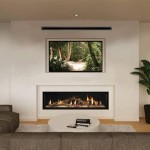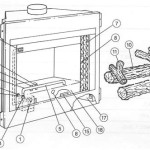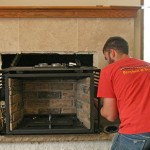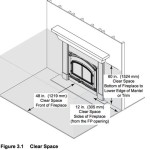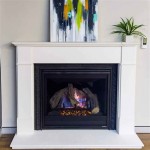Heatilator Wood Burning Fireplace Reviews: An In-Depth Analysis
Heatilator has been a prominent name in the fireplace industry for decades, known for its wood-burning fireplaces that offer both warmth and aesthetic appeal. Understanding the nuances of Heatilator wood-burning fireplaces requires a detailed examination of their models, features, performance, and user experiences. This article provides a comprehensive overview of Heatilator wood-burning fireplaces, analyzing their strengths and weaknesses to help potential buyers make informed decisions.
The popularity of wood-burning fireplaces stems from their ability to create a traditional ambiance and provide a reliable heat source, particularly during power outages. Heatilator seeks to cater to this demand by offering a range of fireplaces designed for various home sizes and heating needs. However, the effectiveness and suitability of each Heatilator model can vary significantly, making a thorough review necessary.
This article will delve into key aspects such as heating efficiency, construction quality, safety features, installation requirements, and maintenance needs. By exploring these facets, readers can gain a comprehensive understanding of Heatilator wood-burning fireplaces and determine if they align with their specific requirements.
Heating Efficiency and Performance
The primary function of a wood-burning fireplace is to provide heat. Heatilator wood-burning fireplaces aim to achieve this with varying degrees of efficiency depending on the model and design. Factors influencing heating efficiency include the firebox design, air intake controls, and the presence of catalytic or non-catalytic combustion systems.
Models with catalytic combustors are generally more efficient as they burn off more of the smoke and gases produced during combustion. This results in less creosote buildup in the chimney and more heat output from the same amount of wood. Non-catalytic models, on the other hand, rely on a more traditional combustion process, which may be less efficient but often requires less maintenance.
The size of the firebox also plays a critical role in heating performance. Larger fireboxes can accommodate more wood, leading to longer burn times and potentially greater heat output. However, a larger firebox may not be ideal for smaller spaces, as it could lead to overheating. Proper sizing of the fireplace to the room is crucial for optimal heating performance and comfort.
Air intake controls are another crucial aspect. These controls allow users to regulate the amount of air entering the firebox, which in turn affects the burn rate and heat output. By adjusting the air intake, users can fine-tune the fireplace to meet their specific heating needs and conserve wood.
EPA-certified Heatilator models are designed to meet specific emissions standards, contributing to cleaner air and reduced environmental impact. These models often incorporate advanced combustion technologies to minimize smoke and particulate matter released into the atmosphere. Potential buyers should consider EPA certification as a factor in their purchasing decision.
User reviews often highlight the importance of using seasoned wood for optimal heating performance. Wet or unseasoned wood produces more smoke and less heat, potentially leading to creosote buildup and reduced efficiency. The type of wood also matters, with hardwoods generally providing more heat than softwoods.
Construction Quality and Durability
The longevity and reliability of a wood-burning fireplace are directly linked to its construction quality. Heatilator wood-burning fireplaces are typically constructed from heavy-gauge steel, which is designed to withstand the high temperatures and stresses associated with wood combustion. The quality of the steel, the welding techniques used, and the overall design contribute to the fireplace's durability.
The firebox is a critical component, and its construction must be robust enough to withstand repeated heating and cooling cycles. Heatilator often employs firebrick lining in the firebox to protect the steel from direct exposure to the flames. Firebrick is a heat-resistant material that helps to distribute heat evenly and extend the lifespan of the firebox.
The door and its sealing mechanism are also important considerations. A well-sealed door prevents air leakage, which can affect the burn rate and efficiency of the fireplace. Heatilator uses various door sealing technologies to ensure a tight seal and minimize air infiltration.
The chimney system is an integral part of the fireplace, and its construction quality is just as important as the fireplace itself. Heatilator offers chimney systems designed to work specifically with their fireplaces. These systems are typically constructed from stainless steel and are designed to withstand the corrosive effects of flue gases. Proper installation and maintenance of the chimney system are crucial for safe and efficient operation.
The exterior finish of the fireplace also contributes to its overall durability and aesthetic appeal. Heatilator uses various finishes, such as powder coating, to protect the steel from rust and corrosion. The quality of the finish can affect the fireplace's appearance and longevity.
Regular cleaning and maintenance are essential for preserving the construction quality of a Heatilator wood-burning fireplace. Removing ash buildup, inspecting the firebrick, and cleaning the chimney regularly can help to prevent damage and ensure long-term performance.
Safety Features and Installation Considerations
Safety is paramount when operating a wood-burning fireplace. Heatilator incorporates various safety features into its fireplaces to minimize the risk of fire hazards and ensure safe operation. These features include spark screens, door seals, and overfire protection systems.
Spark screens are designed to prevent embers from escaping the firebox and igniting nearby materials. These screens are typically made from wire mesh and are intended to contain sparks and prevent them from spreading. Regular inspection and maintenance of the spark screen are essential to ensure its effectiveness.
Door seals help to prevent smoke and gases from leaking into the room. A properly sealed door also helps to control the burn rate and efficiency of the fireplace. Damaged or worn door seals should be replaced promptly to maintain their effectiveness.
Overfire protection systems are designed to prevent the fireplace from overheating, which can damage the unit and potentially lead to a fire. These systems typically involve temperature sensors that automatically adjust the air intake to prevent excessive temperatures.
Proper installation is crucial for the safe and efficient operation of a Heatilator wood-burning fireplace. Installation should be performed by a qualified professional who is familiar with local building codes and regulations. Incorrect installation can lead to fire hazards, carbon monoxide poisoning, and other safety risks.
The chimney system must be installed correctly to ensure proper venting of flue gases. The chimney should be the correct height and diameter to provide adequate draft. It should also be properly insulated to prevent condensation and creosote buildup. Regular chimney inspections and cleaning are essential for maintaining safe operation.
Clearances to combustible materials are another important consideration. The fireplace must be installed at a safe distance from walls, floors, and ceilings to prevent the risk of fire. These clearances are typically specified in the fireplace's installation manual.
Carbon monoxide detectors should be installed in the home to provide early warning of potential carbon monoxide leaks. Carbon monoxide is a colorless, odorless gas that can be produced by incomplete combustion. Regular testing of carbon monoxide detectors is essential to ensure their proper function.
Educating all members of the household about the safe operation of the fireplace is crucial. This includes instructions on how to start and maintain a fire, how to properly dispose of ashes, and how to recognize potential safety hazards.
By carefully considering these safety features and installation considerations, potential buyers can ensure that their Heatilator wood-burning fireplace operates safely and efficiently for years to come.

Heatilator Birmingham 50
Heatilator Icon Series Wood Fireplace Best Fire

Heatilator Element 36 Inch Wood Burning Fireplace

Heatilator Icon 80 42 Inch Wood Burning Fireplace

Heatilator Wood Burning Insert Atmosphere

The Birmingham Hearth Home

Heatilator Sc60 Wood Fireplace Hearth And Home Distributors Of Utah Llc

Heatilator Accelerator 42

Heatilator Constitution Wood Fireplace Hearth And Home Distributors Of Utah Llc

Heatilator Wood Burning Insert Atmosphere
Related Posts

